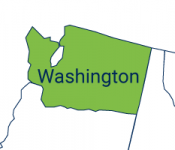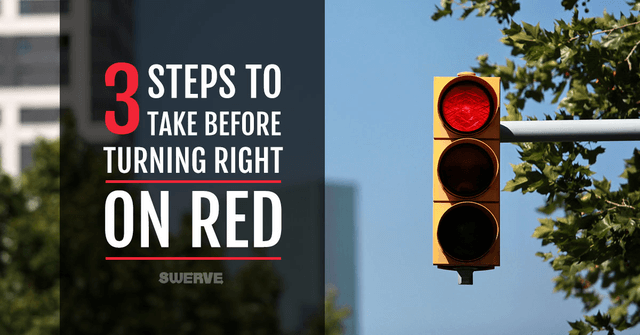Most intersections in the United States allow drivers to turn right while the light is red. This is one way that traffic flows keep going and lines of cars from getting too long. Before you turn right on red, there are three critical steps to make sure you are doing it right and staying safe.
1. Always stop behind the white line
At every intersection, there is a white line. This is a point for drivers to know where they should stop at a red light. Ideally, this keeps the intersection clear for other drivers to move around and see better. The white line is also placed with enough space for pedestrians to have ample room to walk in the crosswalk and be seen by all drivers.
Stopping at the white line is required for all drivers, including those who want to turn right. When approaching the intersection, stop at the white line before proceeding to make sure that you are ready to complete the next two steps.
2. Take time to observe
The biggest reason that drivers need to stop behind the white line is to give them time to observe. If you are stopping properly, you will take time to look around. There are three main things to look for while stopped:
- Signs– not every intersection allows you to turn right when the light is red. It is important that you look around at the posted signs to make sure you aren’t breaking the law. Others require a special signal specifically for drivers turning right. Don’t turn if this light is red since it means there are others with a green turn signal.
- Pedestrians– Whether they are in the crosswalk already or getting ready to cross, pedestrians have the right of way. Do not drive into the crosswalk area if you see people there. It is illegal and creates a potentially dangerous situation for them.
- Oncoming traffic- Stopping allows you to wait until there is an opening for you to pull in without slowing down traffic.
It doesn’t take long to look for these things while stopped, especially once you become experienced. Each one is very important and rushing through the intersection puts a lot of people in danger, including yourself.
3. Proceed with caution
Once you have taken time to observe, make sure you approach the turn with caution. Bicyclists are difficult to see and can quickly come up behind you. Pedestrians might try to run in front of you to cross before the light changes. Vehicles further up the road from you might be turning right or left into the lane you’re trying to enter. These situations are all common scenarios that happen fast if you are not paying close enough attention.
Once you turn into the lane, speed up to match the flow of traffic to prevent any other problematic situations.
Making the right-handed turn with these three steps will help you complete a successful move while avoiding any incident, injury, or lawbreaking.




